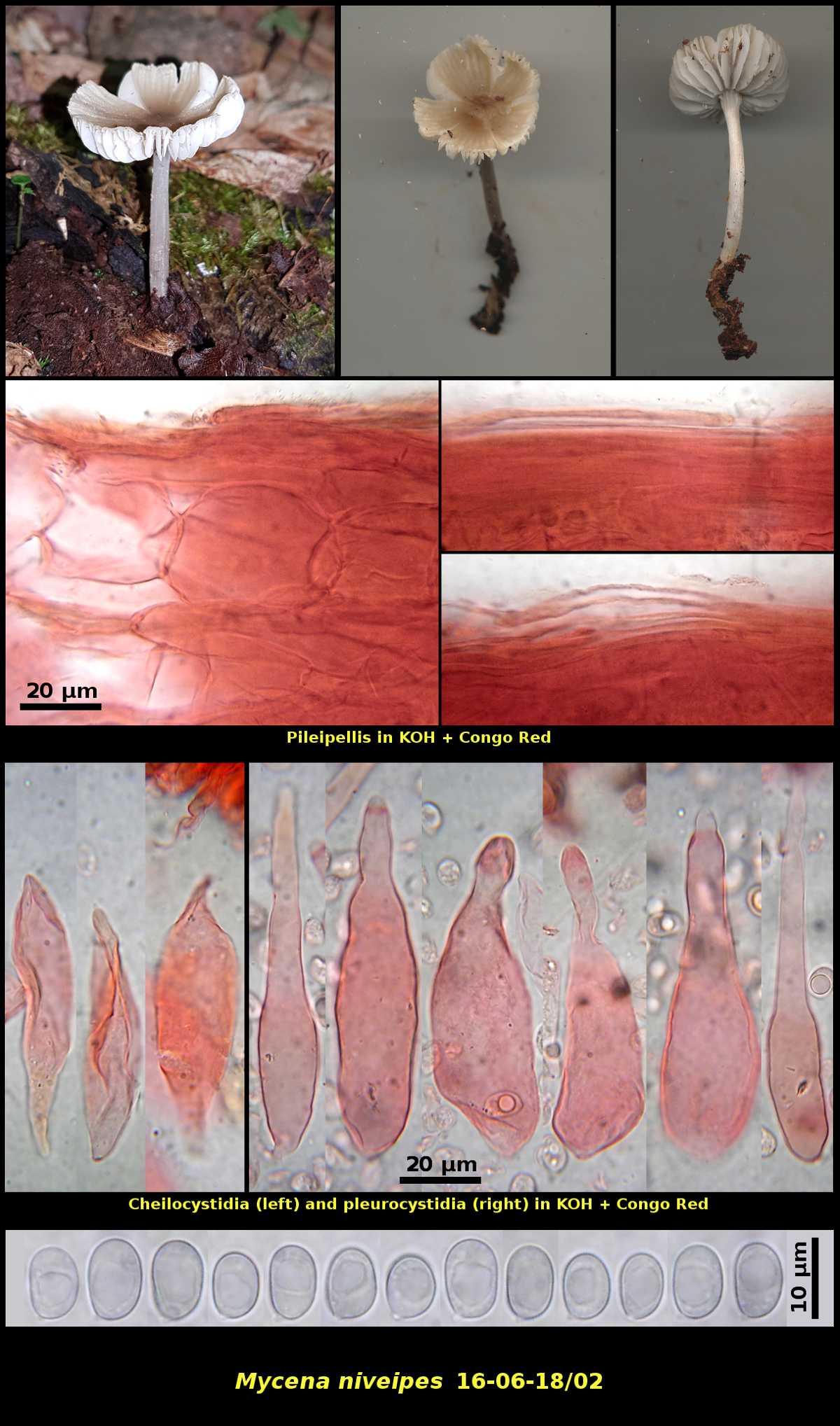Fleshy Fungi of New Brunswick >>
Mycena niveipes
Mycena niveipes (Murrill) Murrill

Solitary on decomposed hardwood log in beech-maple forest, Spednic Lake Protected Natural Area, York Co., New Brunswick (16-06-18/02).
Basidiospores white in spore print, ellipsoidal to obovoid, smooth, weakly amyloid, 7.8-10.3 X 5.4-6.7 µm, D/d = 1.22-1.67 (average[39]: 9.0 X 6.0 µm, D/d = 1.50. Cheilocystidia scattered or produced in clusters, ventricose to broadly clavate, smooth-walled. Pleurocystidia abundant, ventricose to ventricose-rostrate, smooth-walled. Pileipellis an ixocutis, composed of smooth and non-coralloid hyphae, produced above a subcutis of very large cells similar to those of the lamellar trama. Pileal trama dextrinoid in Melzer’s Solution, composed of parallel hyphae that are narrower than those of the subpellis and lamellar trama. Clamp connections not found on the basidia or hyphae.
Originally described in 1916 from Lake Placid, New York, M. niveipes is now known from many localities in North America and Europe. It is recognized in the field by its spring and early summer appearance on hardwood logs, its light brown pileus, medicinal odour (often described as "nitrous") and white stipe. Microscopically it is characterized by its large smooth cheilo- and pleurocystidia and by its smooth, rather than coralloid, pileipellar hyphae. It is a fragile mushroom, both when fresh and when dried, so care must be taken with herbarium specimens to keep them from breaking.
Photograph: D. Malloch (16-06-18/02).